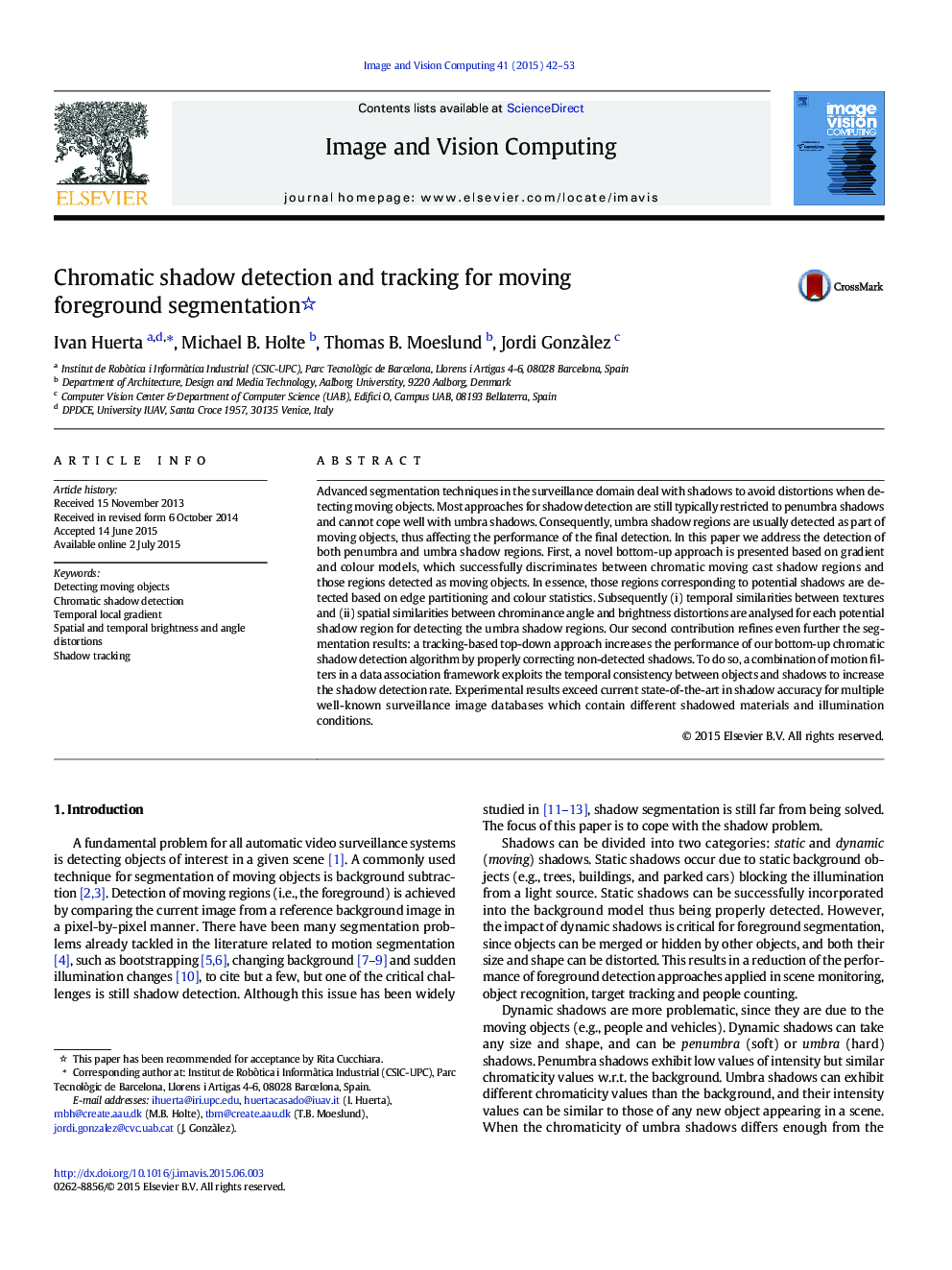| کد مقاله | کد نشریه | سال انتشار | مقاله انگلیسی | نسخه تمام متن |
|---|---|---|---|---|
| 526816 | 869235 | 2015 | 12 صفحه PDF | دانلود رایگان |
• We address the detection of chromatic moving shadows.
• Gradient and colour information is exploited for separating shadow regions.
• Temporal gradients and spatial angle and brightness distortions are used to detect shadows.
• Shadows and objects are tracked using motion filters.
• Mutual information and data association between objects and shadows are used to recover misdetected shadows.
Advanced segmentation techniques in the surveillance domain deal with shadows to avoid distortions when detecting moving objects. Most approaches for shadow detection are still typically restricted to penumbra shadows and cannot cope well with umbra shadows. Consequently, umbra shadow regions are usually detected as part of moving objects, thus affecting the performance of the final detection. In this paper we address the detection of both penumbra and umbra shadow regions. First, a novel bottom-up approach is presented based on gradient and colour models, which successfully discriminates between chromatic moving cast shadow regions and those regions detected as moving objects. In essence, those regions corresponding to potential shadows are detected based on edge partitioning and colour statistics. Subsequently (i) temporal similarities between textures and (ii) spatial similarities between chrominance angle and brightness distortions are analysed for each potential shadow region for detecting the umbra shadow regions. Our second contribution refines even further the segmentation results: a tracking-based top-down approach increases the performance of our bottom-up chromatic shadow detection algorithm by properly correcting non-detected shadows. To do so, a combination of motion filters in a data association framework exploits the temporal consistency between objects and shadows to increase the shadow detection rate. Experimental results exceed current state-of-the-art in shadow accuracy for multiple well-known surveillance image databases which contain different shadowed materials and illumination conditions.
Figure optionsDownload high-quality image (228 K)Download as PowerPoint slide
Journal: Image and Vision Computing - Volume 41, September 2015, Pages 42–53
